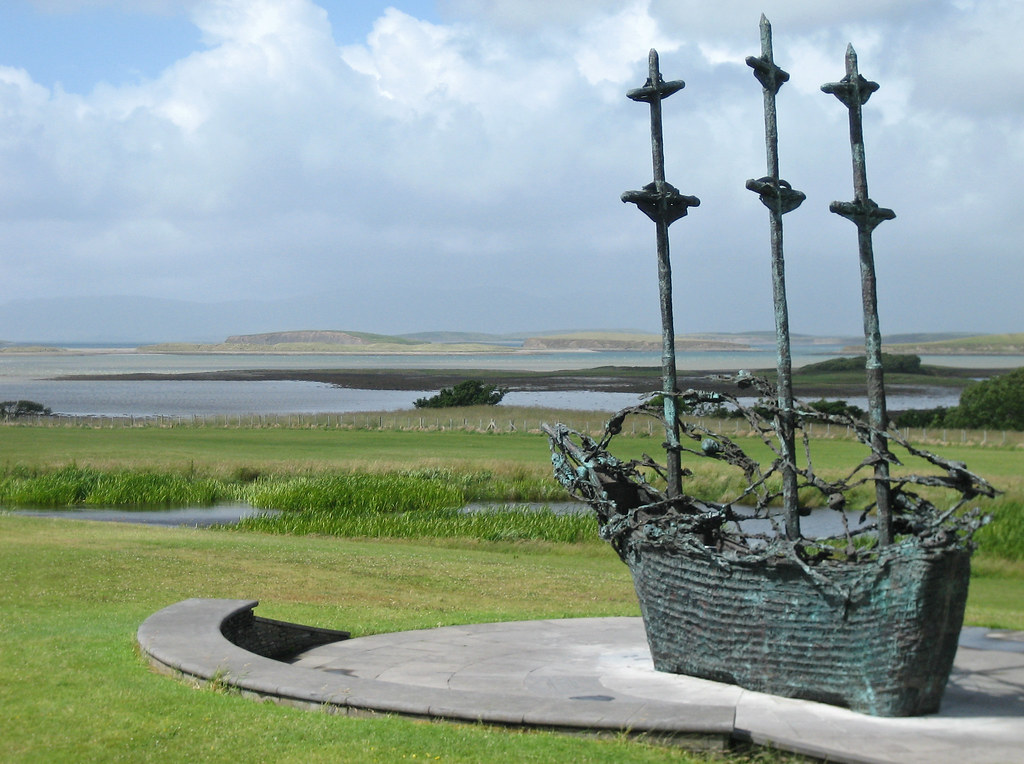“Coffin ships” were a common type of ship that the Irish would use to emigrate to America, Canada and other nations around the world during the 19th century.
They were nicknamed “Coffin ships” as they were overcrowded, lacking in basic amenities, hotspots for terrible hygiene, and as a result rife with disease and death.
Below we will give an insight into conditions on these ships, why they were so popular despite the horrendous conditions, and how they are remembered today.
Why did the Irish Emigrate from Ireland?
During the 1800s, from 1801, Ireland was a part of the United Kingdom of Great Britain and Ireland.
Unfortunately, this official colonisation of Ireland (following centuries of what can technically be considered an unofficial presence on the island) resulted in the mistreatment of native Irish people.
In many cases, British rule refused Irish people the right to speak their own language, express their own culture, and most importantly in this case, own and farm land.
Obviously British rule in Ireland is a long, bloodied and storied history (and one we will only scratch the surface of today) but these conditions helped to create the unfortunate culmination of circumstance that lead to the Irish Potato Famine, also known as the “Great Hunger”, in the mid-1800s.
All of this combined to create an environment in which emigration was viewed by many as the only viable escape, although it should be noted that groups of Irish and Scots-Irish had made the journey in previous years, so it was a well-worn path to a certain extent.
What was a Coffin Ship in 1840s Ireland?
To put it bluntly, Irish coffin ships were horrible, dirty and death-ridden in most cases. Irish people would risk their lives simply by stepping onto these ships, but for many on the Emerald Isle, it was a risk they had to take.
Coffin ships were often overcrowded, allowing diseases to pass quickly from person to person. The spread of disease was worsened by the lack of clean water, proper nourishment and unsanitary living conditions.
Diseases such as Cholera and Typhoid were so common that some ships had a death rate of between 20-50%. In fact, it was so bad that rumours started to grow that sharks would often swim next to the ships as they knew it wouldn’t be long until another dead body was thrown overboard.
Those organising and running these ships were knowingly and willingly breaking the law in order to profit from desperation.
Passenger Vessels Act 1803
Before the 1840s, when the Irish people first started fleeing, the British government implemented a law that aimed to protect people from unsafe traveling conditions. It was the first law ever aimed at protecting emigrants on ships, and it set out the conditions, hygiene, food, and comfort standards that all ship companies in the UK would have to obey.
But, during the 1840s, this law was commonly broken as we’ve highlighted above.
Interestingly, many consider the legislation an act designed not to protect potential travellers, but to essentially make travel by boat unaffordable to Irish peasants. This is supported by the fact that many British landlords, who owned Irish land, lobbied in support of the law as a way to lock their rent payers into the island.
This law raised the price of a ship ticket from Ireland to Canada from approximately £4 to £10 (which is about estimated to be around £970 today).
Dennis Mahon
The conditions of coffin ships were so bad one landlord was sought out and killed for his part in unfair living conditions, the famine and coffin ships.
Dennis Mahon became infamous for his part in unsavoury landlord practice. Upon inheriting an estate, Mahon forced many tenants away and purposefully evicted others.
In his most infamous action, he paid for 1,432 local Irish to be evicted and shipped to Canada on the dreaded coffin ships. Unfortunately a quarter of these souls died at sea, and a few years later in 1847, Mahon was executed in Roscommon as a result of his actions.
Quarantine in Canada
Escaping Ireland via coffin ships didn’t mean everything was instantly perfect on the other side of the Atlantic Ocean.
Both American and Canadian authorities soon became aware of the diseases that spread on these ships and were keen not to allow passengers to come to their continent. As a result, many islands became quarantine centres, where diseases would be left to die before their carriers could start their new lives.
One such place was Grosse Isle, in Lawrence River in Quebec. On the island, a total of 3000 Irish people died; today, the cemetery holds 5000 Irish bodies. Most of the deaths were caused by Typhoid.
Canada did their best, separating the visibly sick from everyone else. Unfortunately, it was not enough and the legacy travelled across the seas.
Irish Coffin Ship Memorials
Nowadays, the entire sorry episode of British and Irish history is remembered in various ways.
One such commemoration, The Galway Famine Ship Memorial is an expansion of a previous memorial to the 6-year-old girl who died during the potato famine. This memorial is in the shape of sails, and the names of 50 ships carrying hundreds of people to their deaths are written on it.
The National Famine Monument is located in Murrisk just outside Westport, in County Mayo. It’s a bronze ship with human skeletons in the sails. It’s a reminder of the agony that those who set sail on coffin ships went through.
Other Ships
Coffin ships weren’t the only ships people traveled from Ireland in. Some managed to stow away on “Packet Ships”. These ships were intended for cargo and were not ideal for human habitation. However, because they had fewer people, disease spread less easily.
The few Irish who could afford them would board traditional Passenger Ships, which were very low on disease, and had good hygiene standards but in many cases were unaffordable to the masses.

